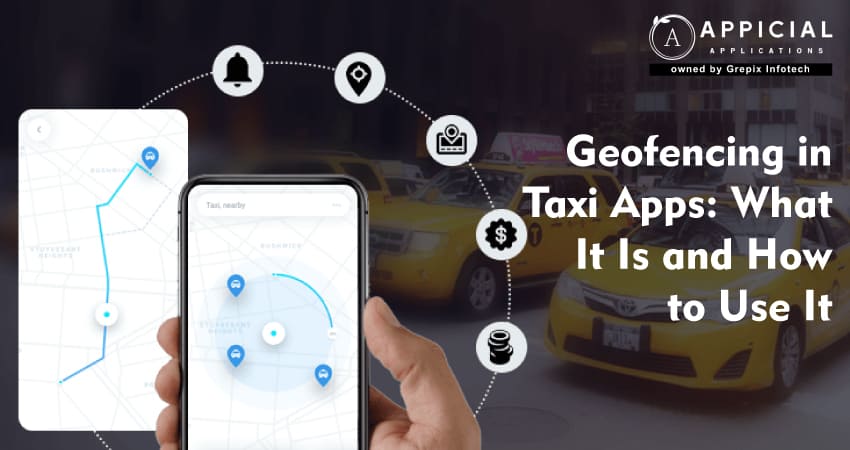
Geofencing in Taxi Apps: What It Is and How to Use It
Geofencing technology has become an integral part of various mobile applications, significantly enhancing user experiences in sectors ranging from retail to personal security. Among its many applications, geofencing has notably revolutionized the taxi industry by providing more efficient, safer, and personalized services. This comprehensive article will delve into what geofencing is, its role in taxi apps, and how it is used to streamline operations and improve both driver and passenger experiences.
Geofencing technology offers numerous benefits to taxi applications, making them more efficient, safe, and user-friendly. By automating systems, enhancing security measures, aiding in regulatory compliance, and improving overall customer service, geofencing helps taxi companies provide a superior service that meets the demands of a modern urban environment. As this technology evolves, we can expect even more innovative uses and enhancements in the transportation sector.
Geo-fencing technology, crucial in enhancing mobile app functionalities across various sectors including retail and personal security, has significantly transformed the taxi industry. Using GPS, RFID, Wi-Fi, or cellular data, geo-fencing triggers actions when a device crosses a defined virtual boundary, optimizing taxi dispatches, dynamic pricing, and enhancing security. This technology enables taxi apps to automate operations, ensure regulatory compliance, and improve customer service, making services more efficient and responsive to modern urban needs. It allows for strategic business advantages by integrating backend systems, ensuring privacy, and optimizing app performance for better user and driver experiences.
Understanding Geofencing
Geofencing is a location-based service in which a software or application uses GPS, RFID, Wi-Fi, or cellular data to trigger a pre-programmed action when a mobile device or RFID tag enters or exits a virtual boundary set up around a geographical location, known as a geofence. This technology can trigger alerts, send notifications, or even automate entry and exit logs.
How Geofencing Works
To set up a geofence, a virtual perimeter is defined around a specified location on a map. This can be as simple as a radius around a point location, or as complex as a polygon that covers varied geographical boundaries. When a device enters or exits this area, the geofence software triggers responses based on the rules defined by the application or software.
Geofencing in Taxi Apps
In taxi applications, geofencing is utilized to create more efficient and user-friendly services. Here are several ways in which geofencing is applied:
1 Automated Dispatch System
Taxi apps use geofencing to manage fleets more effectively by assigning rides to the nearest available driver. When a driver enters a geofenced area where a ride request has been made, the system can automatically send the ride details to the driver, reducing wait times for passengers and improving response rates.
2 Dynamic Pricing
Geofencing allows taxi apps to implement dynamic pricing models. For instance, prices may rise in geofenced areas with high demand, such as sports stadiums following a major game or downtown during rush hour. This effectively balances supply and demand while also optimizing driver earnings.
3 Security Enhancements
For safety, taxi apps can set up geofences around unsafe or high-risk areas. Drivers receive alerts when entering such areas, and companies can restrict pick-ups or drop-offs in these locations to ensure driver and passenger safety.
4 Improved Customer Service
Geofencing can trigger notifications to passengers when a taxi enters a predefined radius of their location, giving them time to prepare for pickup. Additionally, if a passenger accidentally leaves belongings in the vehicle, geofencing can be used to notify the driver if they exit a certain area without confirming the delivery of items.
5 Regulatory Compliance
In cities where there are restrictions on where taxis can operate, geofencing can help companies comply with local regulations by preventing drivers from accepting rides in restricted zones.
Also Read: Building a Taxi App for Multi-Region Use: Challenges and Solutions
Implementing Geofencing in Taxi Apps
Implementing geofencing in a taxi application involves several technical and strategic steps:
Technical Aspects
1 Choosing the Right Platform
Developers must select a platform that supports robust geofencing features, such as Google Maps for Work or Apple's Core Location Framework.
2 Defining Boundaries
Careful planning is required to define the boundaries that will trigger the desired actions. This involves mapping out the geofences accurately in the application.
3 Integration with Backend Systems
Geofencing needs to be integrated with the app’s backend systems to ensure that data flows seamlessly and actions like notifications and billing adjustments are executed promptly.
Strategic Considerations
1 User Privacy
It's crucial to maintain user privacy by ensuring that location data is securely handled and that users are informed about how their data is used.
2 Optimization for Battery Usage
Since geofencing relies on continuous access to device location, optimizing the app to minimize battery drain is essential.
3 Customizable Features
Offering users and drivers customizable geofencing options can enhance the app's flexibility and appeal.
Conclusion
Geofencing technology has undeniably transformed the landscape of the taxi industry, bringing forth a new era of efficiency, safety, and customer satisfaction. By integrating geofencing into taxi applications, companies can automate dispatch systems, implement dynamic pricing, enhance security measures, improve customer service, and ensure compliance with local regulations. These advancements not only streamline operations but also provide a competitive edge in a rapidly evolving market.
At Appicial Applications, we are committed to harnessing the power of geofencing technology to deliver innovative and customizable taxi app development. Our expertise enables taxi businesses to capitalize on the myriad benefits of geofencing, ensuring they meet the modern demands of both drivers and passengers. As technology continues to evolve, we remain at the forefront of innovation, dedicated to providing advanced features that drive the future of transportation. Partner with us to elevate your taxi services and navigate the dynamic landscape of the urban mobility sector with confidence.
Looking out to start your own venture like Uber? Try out our HireMe Uber Clone, the easiest way to kick-start your taxi business.






